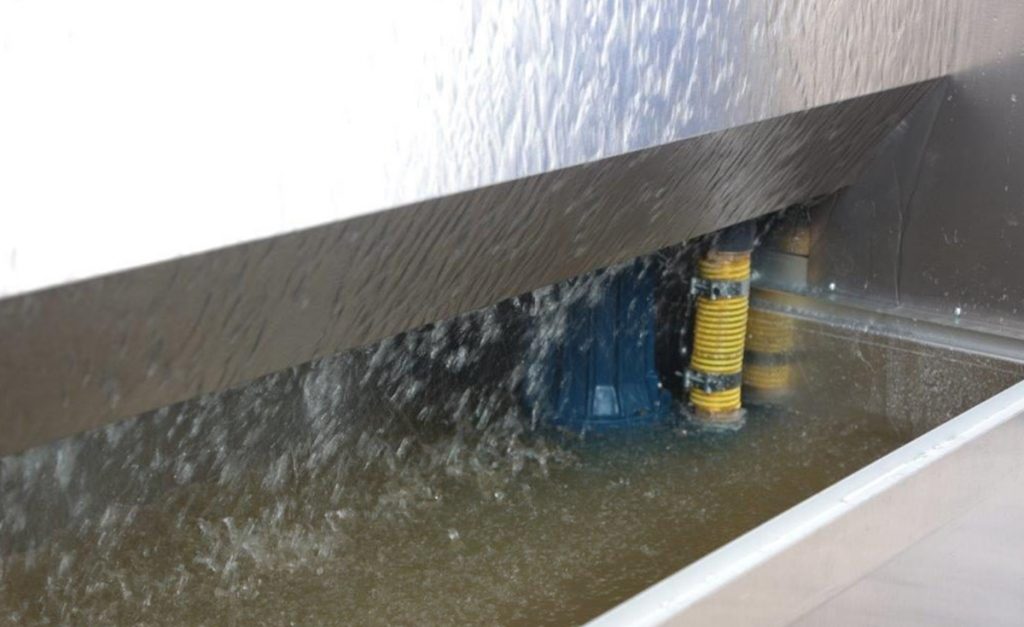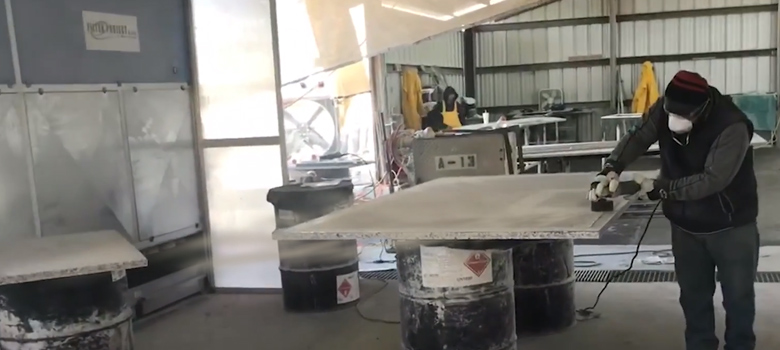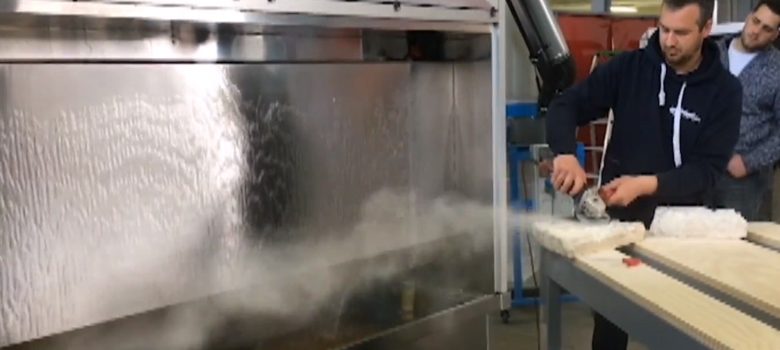Dust Collection Methods & Why They Matter
Dust control in a fabrication shop or any other stone fabricating environment is important. Knowing why dust collection matters can deepen appreciation for various dust collection products and processes. In this article we will consider some of the various dust collection methods exist for stone fabrication. Additionally, we will delve into some of the reasons why dust collection matters.
Controlling dust may seem like a non-essential practice, yet it is an important aspect of stone fabrication. And there are a number of processes and machines that can contribute to an environment that has as little dust as possible. Let’s take a look at some methods for removing dust from some work environments associated with stone fabrication.
Dust Collection In the Fabrication Shop
The fab shop is one environment that benefits from the collection of dust. Fabricating natural and engineered stone generates a tremendous amount of dust particles. If the dust in the air is not collected and is left to float around, it can make the work environment cloudy and even unsafe.
Since dust in the air of a stone fabrication shop can make it difficult to breathe, and even harmful, it is important to be familiar with the various machinery that can help with dust removal in stone fabrication shops. Before we look at some of the dust collection methods, let’s look at why it is needed.
In the Fabrication Shop
There are a number of tasks in a fabrication shop that cause dust to be generated. Some dust-causing tasks include:
- Cutting
- Core Drilling
- Edge Profiling
- Polishing
- Grinding
In fact, any task that involves the removal of or shaping of natural or engineered stone will generate dust. So fabricators working stone with hand tools like polishers, grinders, or drills generate dust around the “bench” on which they are working need dust collection. And various saws require methods for collecting dust generated by the machine as well.
Machinery in a fabrication shop generates a lot of dust. So it stands to reason that dust collection methods play an integral part of the fabrication process. In fact, dust removal techniques are employed in more than one form; and often time are practiced in a variety of ways. Let’s take a look at a couple of methods fabricators use to control stone dust.
Dry Dust Collection
One method fabricators use for collecting dust is through the use of dry dust collectors. Using air flow to carry dust particles through filters and then recirculating the air back out into the shop is one method. Various machinery is designed to accomplish this. Filter Project offers an array of dust collectors to do this. Let’s consider some variations of dry dust collection equipment.
A popular dry dust collector is the free-standing dry dust cabin. These machines stand adjacent to the work area and draw the air into the machine so that it can pass through the filters and leave the dust behind.
Another effective device that filters dust from the air is the dry dust bench. This machine is actually a bench on top of which the fabricator works. The bench has a motor built in that draws the air downward. Vents surrounding the perimeter of the work area draw in air. These vents carry the air over the filters inside the machine; removing the particles from the air.
So dry dust collection is one method for removing stone dust from the work area. Yet, their is another method that is very popular for collecting dust; one that uses water.
Dust Collection Using Water
Wet dust collectors are another method for removing dust particles from the air in a fabrication shop. These machines are similar to dry collectors mentioned previously. However, water filters the particles instead of fibrous filters. In the case of the water wall, a sheet of water flows across a nearly vertical surface. Meanwhile, the machine takes in air; causing the dust to become trapped by the water. The water flows into a settling tank where dust particles settle to the bottom. Then the water recirculates back through the machine.
In addition to the “water wall”, there is also a wet dust bench that functions like the dry bench. However, it incorporates water into the process to use as the filter much like the water wall does.

Other Wet Dust Collection Methods
In addition to machines designed specifically for collecting dust, other fabrication processes also remove dust through the use of “wet” equipment. Some of these include wet saws and wet polishing systems. These machines keep water flowing on the material as it cuts. This process offers a number of benefits including dust removal. For example, wet saws cut stone in the presence of water and never create dust in the first place. In turn, dust does not need to be collected.
When using wet dust collection methods, fabrication shops also employ additional processes to manage the “sludge” that wet dust collection produces. Using water treatment systems designed for stone fabrication accomplishes this part of the operation. The system can be one of many and they range in size and function. Some of the systems available are large water treatment plants like the CH80 Stone Water Recycling System and others are smaller lamellar type systems.


